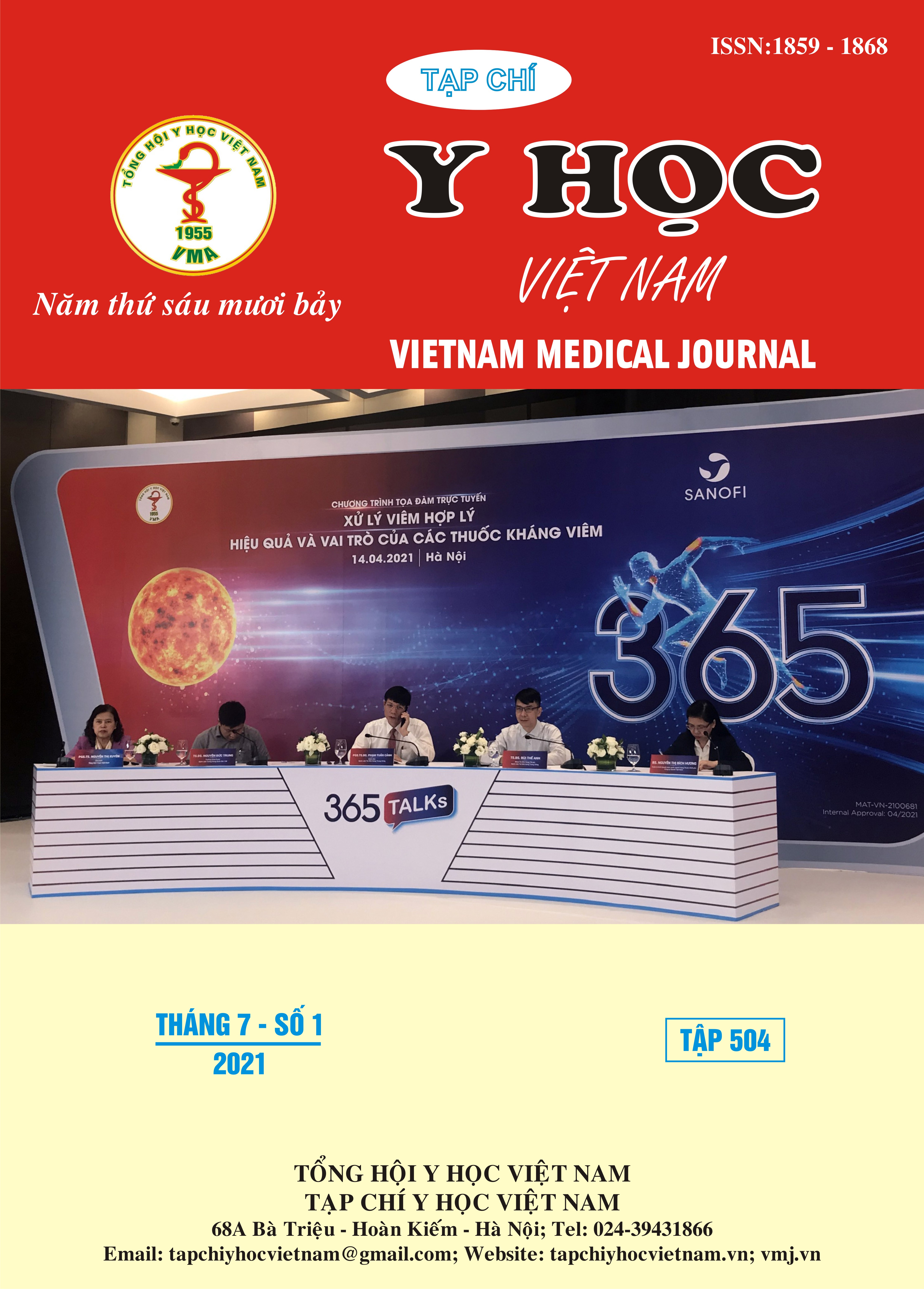SURVEY OF CARDIO-ANKLE VASCULAR INDEX AND RELATIONSHIP WITH CLINICAL , SUBCLINICAL CHARACTERISTICS IN PATIENTS TREATING WITH MAINTENANCE HEMODIALYSIS
Main Article Content
Abstract
Objective: To investigate Cardio-Ankle Vascular Index (CAVI) and its relationship with some clinical and subclinical characteristics of patients with regular hemodialysis. Subjects and methods: A cross-sectional descriptive study of 111 maintenance hemodialysis patients and 88 normal people of the same age and sex. All subjects were measured CAVI index. Results: The average CAVI index in hemodialysis patients was 9.96 ± 2.14, higher than that of normal people (8.14 ± 0.59), p<0.001. Ratio of increased CAVI compared with the control group was 66.7%. The patients with age ≥ 60 years old; hemodialysis time ≥ 5 years; loss of residual renal function; diabetes mellitus; hypertension had mean CAVI and/or ratio of increase CAVI was higher than those of the patients without the above characteristics, p<0.05. The CAVI has a positive correlation with the duration of hemodialysis, r = 0.247, p < 0.01. Conclusion: Increased CAVI is common in hemodialysis patients and it related to old age, prolonged duration of hemodialysis, loss of residual renal function, diabetic mellitus and hypertension.
Article Details
Keywords
End-stage chronic kidney disease, Maintenance hemodialysis, Cardio-Ankle Vascular Index, diabetic mellitus
References
2. Thomas R., Kanso A., Sedor J.R. (2008). Chronic kidney disease and its complications. Prim Care, 35(2): 329 – 32.
3. Ichihara A, Yamashita N, Takemitsu T, et al. (2008). Cardio-ankle vascular index and ankle pulse wave velocity as a marker of arterial fibrosis in kidney failure treated by hemodialysis. Am J Kidney Dis, 52(5), 947-955.
4. Kato A, Takita T, Furuhashi M, et al. (2012). Brachial-Ankle Pulse Wave Velocity and the Cardio-AnkleVascular Index as a Predictor of Cardiovascular Outcomesin Patients on Regular Hemodialysis. Therapeutic Apheresis and Dialysis 16 (3): 232-241.
5. Takenaka T, Hoshi H, Kato N, et al (2008). Cardio-Ankle Vascular Index to Screen Cardiovascular Diseases in Patients with End-Stage Renal Diseases. J Atheroscler Thromb 15: 339-44.
6. Jeznach-Steinhagen A, Słotwiński R, Szczygieł B. (2007). Malnutrition, inflammation, atherosclerosis in hemodialysis patients. Rocz Panstw Zakl Hig. 58(1):83-8.
7. Nagayama D., Saiki A., Endo K., Yamaguchi T., et al. (2010). Improvement of cardio-ankle vascular index by glimepiride in type 2 diabetic patients. Int J Clin Pract, 64(13), pp. 1796-1801.
8. Takafumi Okura, Sanae Wanatabe, et al. (2007). Relationship betwen cardio ankle vascular index (CAVI) and carotid atherosclerosis in patients with essential hypertension. Hypertens Res 30 (4): 335-340.


